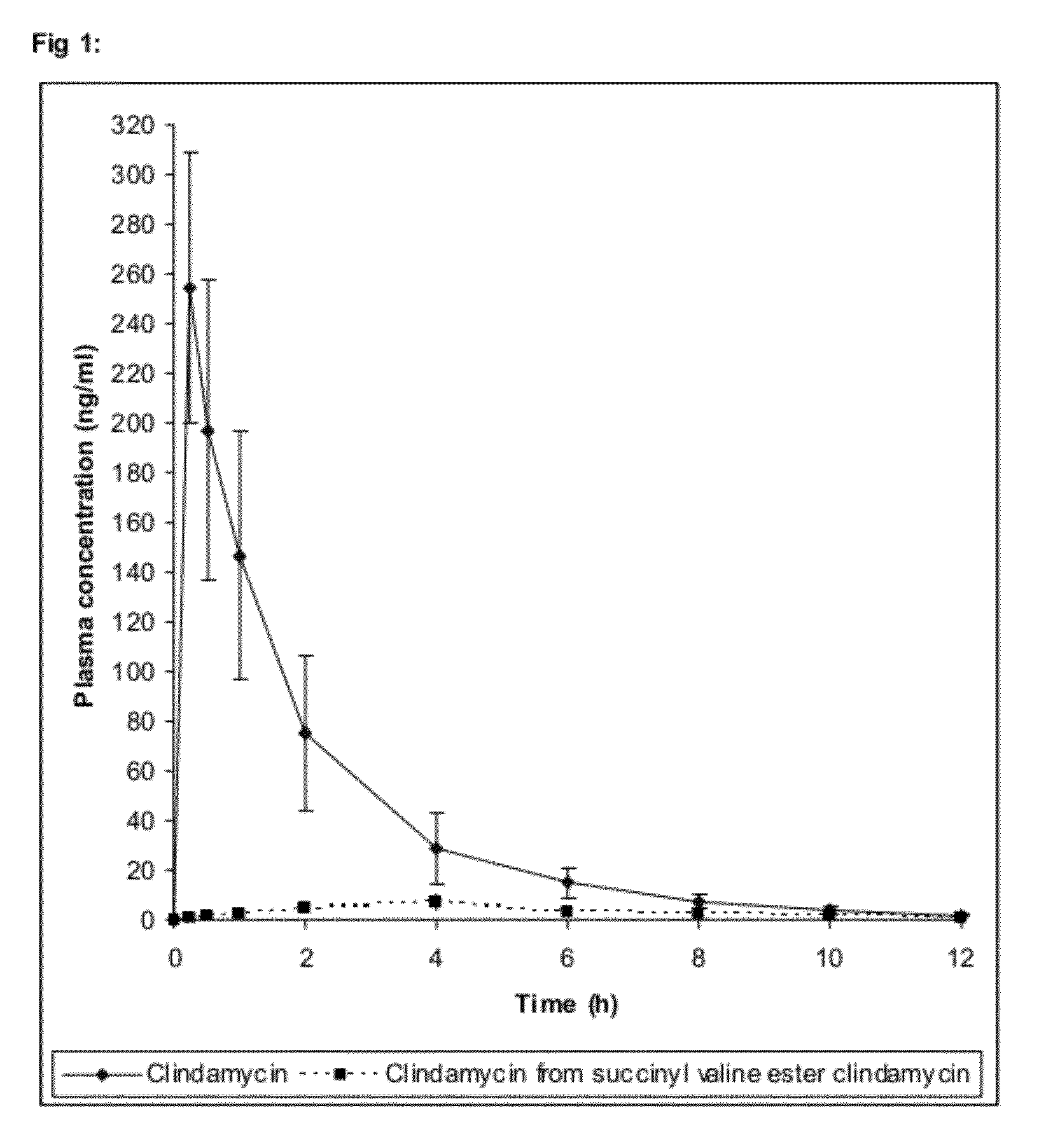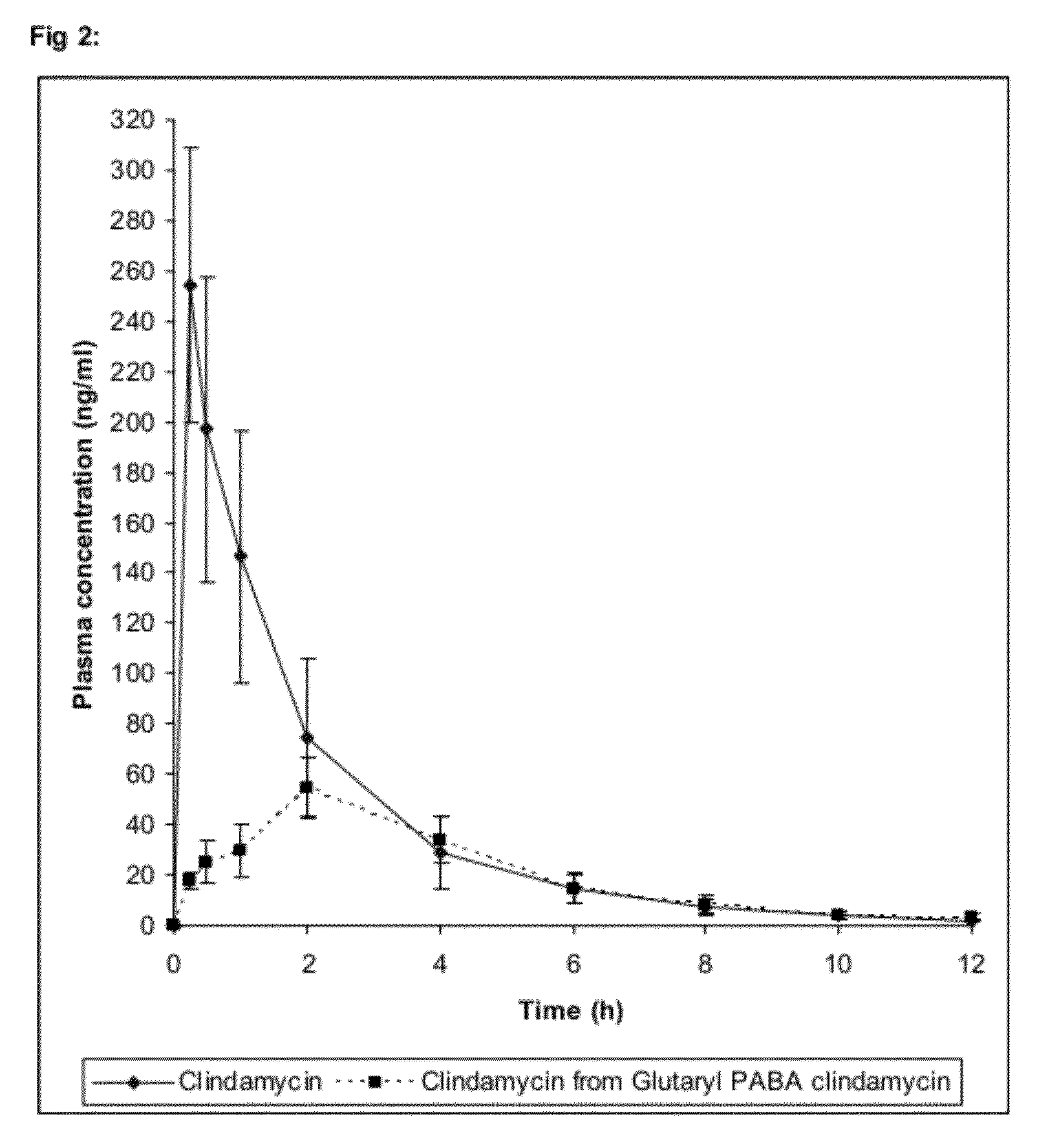Use of prodrugs to avoid gi mediated adverse events
a technology of gi and adverse events, applied in the direction of drug composition, antibiotics, metabolic disorders, etc., can solve the problems of limiting the maximum dose which can be used, serious “patient non-compliance”, inadequate treatment, etc., to reduce the frequency of drug dosage, improve patient compliance, and minimize the side effects of gastrointestinal symptoms
- Summary
- Abstract
- Description
- Claims
- Application Information
AI Technical Summary
Benefits of technology
Problems solved by technology
Method used
Image
Examples
example 1a
General Route of Synthesis for Amino Acid or Peptide Dicarboxylic Acid Conjugates
[0285]Three general routes of synthesis of prodrugs of various drugs as their HCl or TFA salts are given in Scheme 1 (alcohol ester), Scheme 2 (enol ester) and Scheme 3 (amine amide) below. These routes of synthesis are illustrated using a succinic acid linker. This can, however, be applied to all linkers of the present invention.
example 1b
General Route of Synthesis of Dicarboxylate Conjugates
[0286]Three general routes of synthesis of prodrugs of various drugs are given in Scheme 4a (alcohol ester), Scheme 4b (enol ester) and Scheme 4c (amine amide) below. These routes of synthesis are illustrated using a succinic acid linker. This can, however, be applied to all linkers of the present invention.
example 2
Synthesis of metronidazole-[succinyl-(S)-valine]ester
[0287]Metronidazole-[succinyl-(S)-valine]ester was prepared from (S)-valine tert-butyl ester hydrochloride in three steps (see Scheme 5).
[0288](S)-Valine tert-butyl ester hydrochloride was treated with succinic anhydride in the presence of triethylamine to give succinyl-(S)-valine tert-butyl ester which was then coupled to metronidazole via a N,N-dicyclohexylcarbodi-imide (DCC) mediated reaction to give metronidazole-[succinyl-(S)-valine tert-butyl ester]. After purification, the tert-butyl ester was cleaved by treatment with trifluoroacetic acid to give metronidazole-[succinyl-(S)-valine]ester free base in >95% purity by HPLC and NMR.
Detail
[0289]To a stirred solution of (S)-valine tert-butyl ester hydrochloride (5.00 g, 23.8 mmol) in anhydrous dichloromethane (125 mL) was added triethylamine (5.31 g, 7.31 mL, 52.5 mmol) and succinic anhydride (2.63 g, 26.3 mmol) and the reaction was stirred at room temperature overnight. The solu...
PUM
| Property | Measurement | Unit |
|---|---|---|
| structure | aaaaa | aaaaa |
| Ra | aaaaa | aaaaa |
| concentrations | aaaaa | aaaaa |
Abstract
Description
Claims
Application Information
 Login to View More
Login to View More - R&D
- Intellectual Property
- Life Sciences
- Materials
- Tech Scout
- Unparalleled Data Quality
- Higher Quality Content
- 60% Fewer Hallucinations
Browse by: Latest US Patents, China's latest patents, Technical Efficacy Thesaurus, Application Domain, Technology Topic, Popular Technical Reports.
© 2025 PatSnap. All rights reserved.Legal|Privacy policy|Modern Slavery Act Transparency Statement|Sitemap|About US| Contact US: help@patsnap.com



